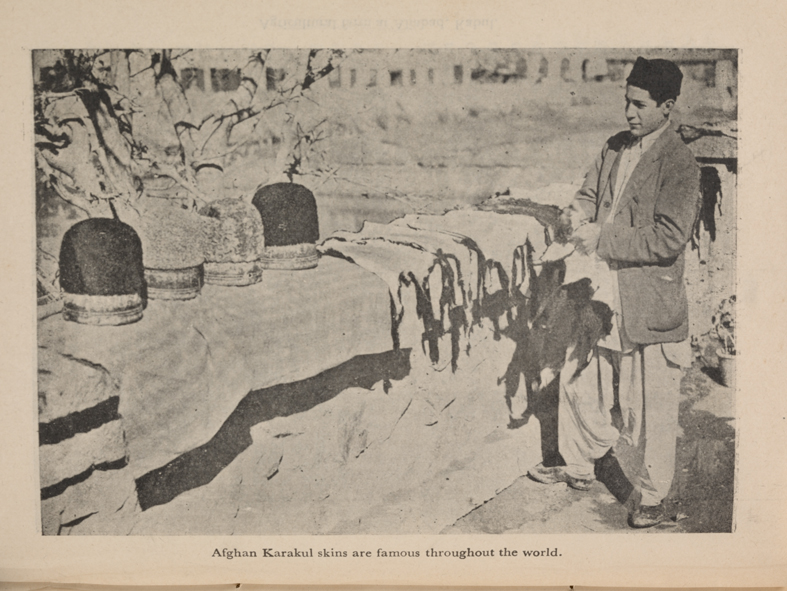Afghanistan's animal pelts
Robert Cobcroft
Animal hides the chief source of Afghan revenue By the 1950's Afghanistan's animal population whether wild or domesticated was hunted and rounded up for it's hides. Soft luxurious karakul lamb skins have long been highly prized worldwide. The Karakul Company met demand by supplying baby karakul skins in the millions. Certainly nomads produced skin rugs for their own personal use, take this into consideration and we find an entire nation slaughtering animals for their skins for one reason or another. Even the wildlife didn't escape, wolves foxes and lynx were skinned tanned and exported.
Hands up those of you who took off to Afghanistan in the 60's and 70's and came back with one of those long fur coats or vests that were so popular at the time. Ghazni was famous for the production of fur coats and associated products.
The following account published in the 1950's shows that Karakul sheep skin production was "the chief source of Afghan revenue".
"Afghanistan is noted for it's wild animals. The most important of these are : the wolf, fox, hyena, wild dog, wild cat, jungle cat, common leopard, small Indian fox, mongoose, wild sheep, onager (wild ass), mole, talpidae, Indian shrew, collared-hedgehog, bats, jerboa, gerbit, deer, oorial, ibex, pica and hare.
There are different kinds of sheep, such as the Turki, Ghilji (Ghilzai) Hazaraji, and Kandahari. There is another famous breed of sheep - the Karakuli - which is reared for the sake of it's skins. All Afghan sheep are remarkable for their fat tails, which are over a foot broad, and almost entirely composed of fat.
Northern Afghanistan, it is here that the famous Karakuli sheep are reared. Every year millions of their newly-born lambs are killed for their fine glistening skins which have a ready market abroad, and, from an economic point of view, form the chief source of Afghan revenue.
The Karakul industry : The Karakul producing territory extends from Aqchah in the North of Herat. In 1945, the producton was 2,400,000 pieces ; at present (1958) it is about 2,000,000 pieces a year. It is estimated that independent producers and distributors handle about 1,300,000, while the Karakul Company handles about 700,000 skins. The Karakul Company has ten plants. The Mazari Sharif plant alone handles 400,000 skins, while the Andkhoi plant handles from 100,000 to 150,000 skins a year. Next to carpets, the making of sheepskin coats and vests is a flourishing industry. Usually the edges and sleeves of the coats are embroidered with yellow silk. Coats of other furs, such as Karakul skins, wolf hides and the pelts of fox, and lynx, etc., are very common in use, and a large number of these are exported." 1
Afghanistan's animals gave up milk, wool and provided transport. Whether required for the survival of the family in a nomadic environment or the economic survival of an entire nation, the animals of Afghanistan kept on giving to keep a nation alive - literally with the skin off their backs.
1 Ali, Mohammed. M.A. A new Guide to Afghanistan Kabul 1958. 56, 68, 77

